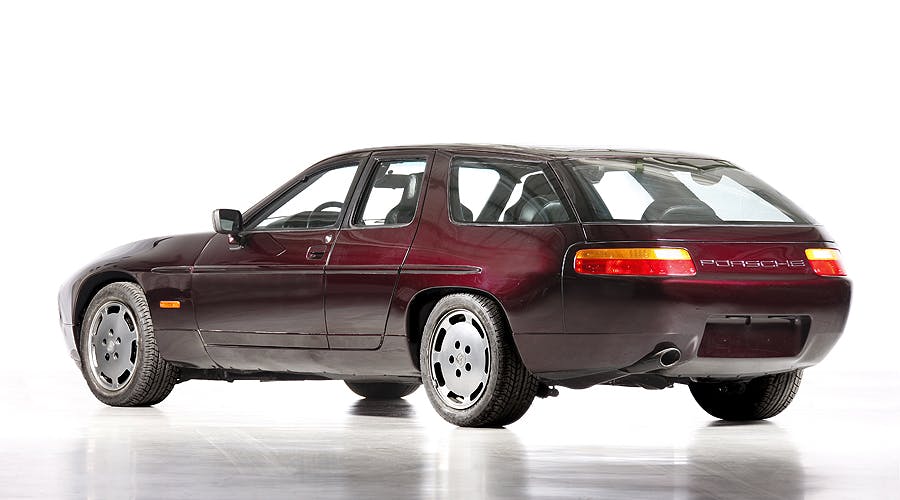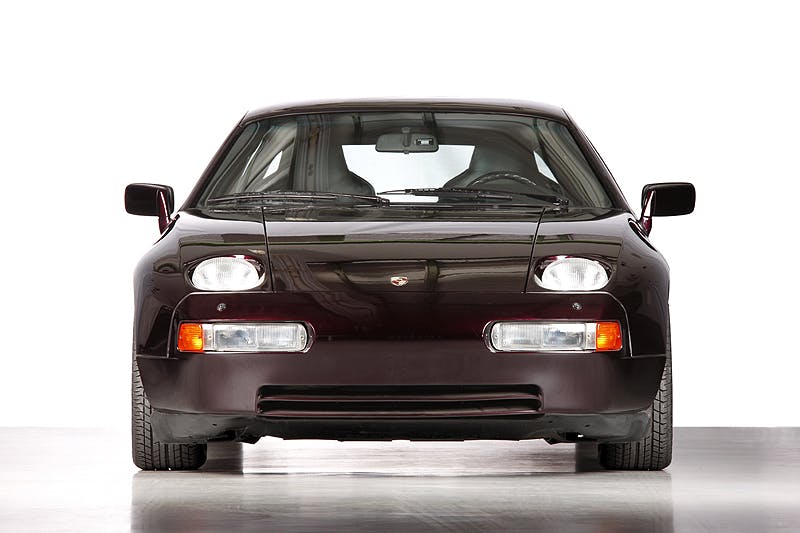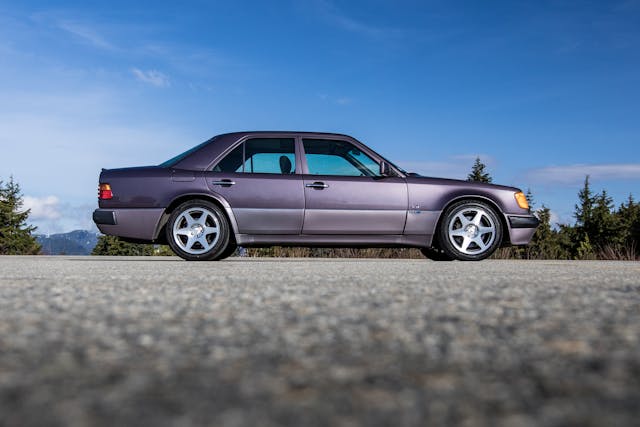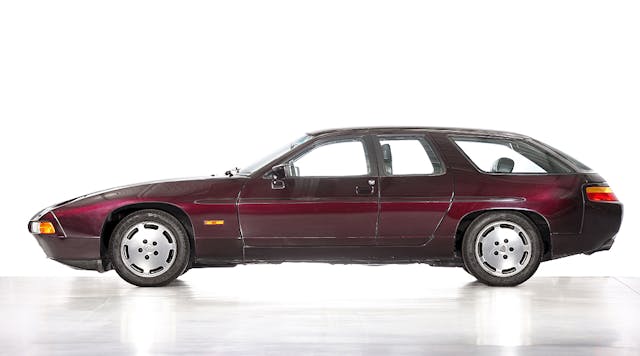This four-door Porsche 928 is the proto-Panamera that never was
Today, and certainly in terms of volume, Porsche is primarily a manufacturer of four-doored vehicles. The Cayenne and Macan SUVs dominate the company’s sales charts, and the Panamera and electric Taycan aren’t far behind. Porsche still makes sports cars like the 911 and 718, but the company’s healthy bottom line is largely thanks to more mainstream offerings.
Let’s rewind the clock thirty-three years, to 1987, focusing our attention on a rather unusual machine that suggests a Swabian Nostradamus or two in Stuttgart’s ranks. The curious car in question is a one-off Porsche 928, reimagined as a fast, family-carrying grand tourer. While it would take more than two decades before Porsche introduced the Panamera sedan, this forward-looking four-door represents an early vision of the Porsche people movers we know today.

The 928, launched in 1977 for the 1978 model year, was conceived as a more modern vehicle to replace the aging 911. Its V-8 thrilled, but the Porsche purists favored the 911’s air-cooled motor, familiar styling, and rear-engine layout. Porsche eventually agreed to keep the old icon around.
A decade later, in January of 1987, development began on a prototype car that suggested the grand-touring 928 would diverge even further from the 911. Using a just-released 928 S4 as a foundation, Porsche increased the 5.0-liter, 316-hp engine’s power output to a healthy 330 hp, and then set about stretching the chassis to provide extra legroom.
The work was not done by Porsche, but by a division of the American Sunroof Company (ASC). ASC was already an established Porsche supplier, currently building convertible 944s in a coachbuilding facility in Weinsberg, Germany, north of Stuttgart. The one-off prototype was built with two small rear coach doors for improved passenger accessibility.
Porsche’s business plan was to expand the 928 lineup to include the coupe, four-door, and a cabriolet. A turnover at Porsche headquarters, however, soon spelled doom for the idea.

Peter Schutz was the Porsche CEO who famously picked up a marker and drew a line extending the 911’s lineage off a chart and along a wall, telling his engineers to make sure the model would live on. Porsche flourished under his direction, but a sharp downturn in the U.S. economy in October of 1987 resulted in sales cratering. In December, Schutz was out (in part because of how much money Porsche was losing on the 959) and CFO Heinz Branitzky stepped into the chairman’s role. He immediately battened down the hatches, squashing projects deemed unnecessary or risky.
Reportedly, Porsche’s engineers weren’t especially happy with the torsional rigidity of the four-door 928 prototype, so it was far from a done deal. Still, the one-off was a fully functioning car, and Porsche gifted it to Heinz Prechter, the president of ASC. It is not known how much he actually drove the car, but it didn’t surface again until it sold at RM auction in 2002 for $44,000.

Instead of building four-door 928s, Porsche assembled a different kind of super-sedan: the Mercedes-Benz 500E. Built on the line formerly used to create the aforementioned 959 supercar, the 500E was a financially successful partnership for Porsche, keeping the company’s head above water. Mercedes-Benz exerted strict control over the project, and they’re wonderful cars to drive. Ultimately, the 500E is more a Mercedes infused with Porsche essence than it is the other way around.

Brittanie Kinch, the art historian who curated the The Porsche Effect exhibit at the Petersen Automotive Museum in 2018, says she included the four-door 928 for its historical significance and for its style. In person it’s unusually proportioned, it’s also far prettier than the initial Panamera.
You have to wonder what would have happened if Porsche had given the go-ahead on a production version of this machine. Would the Panamera have arrived sooner? Might there have been a small Porsche sedan occupying the entry-level foothold that the Macan now inhabits? Whatever the case, the four-door 928 proves that Porsche was examining ways to expand its portfolio well before the ball got rolling with the Cayenne.



